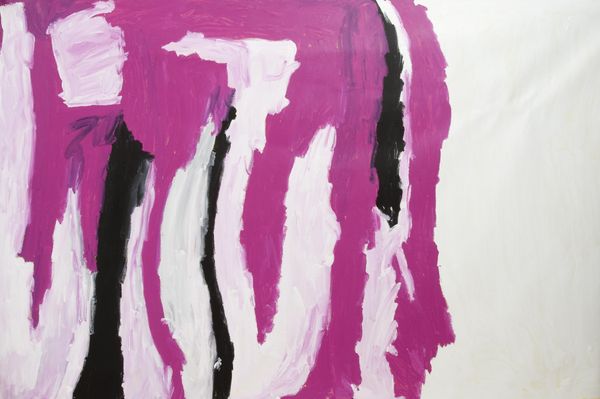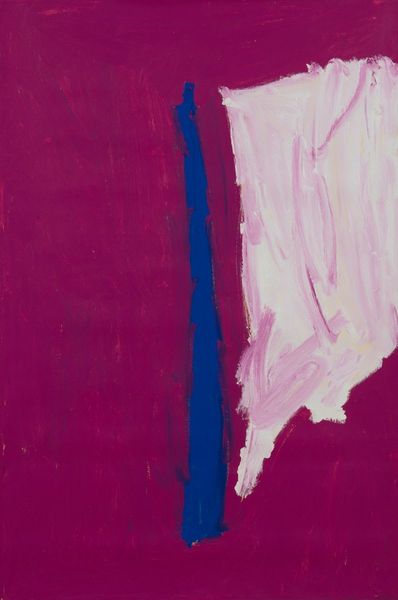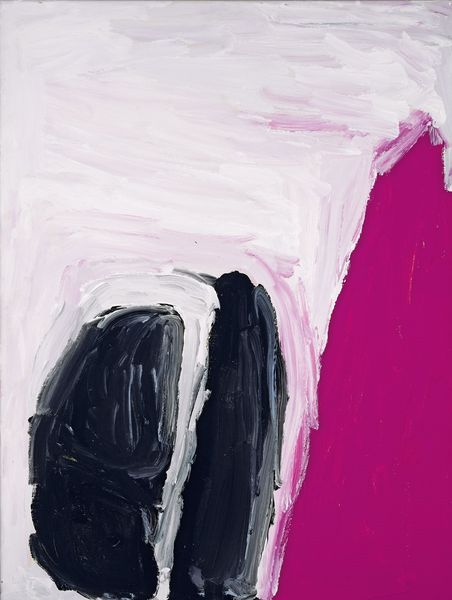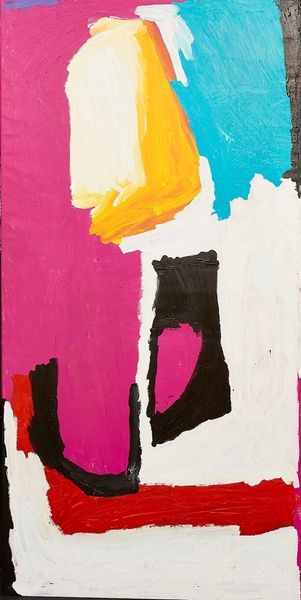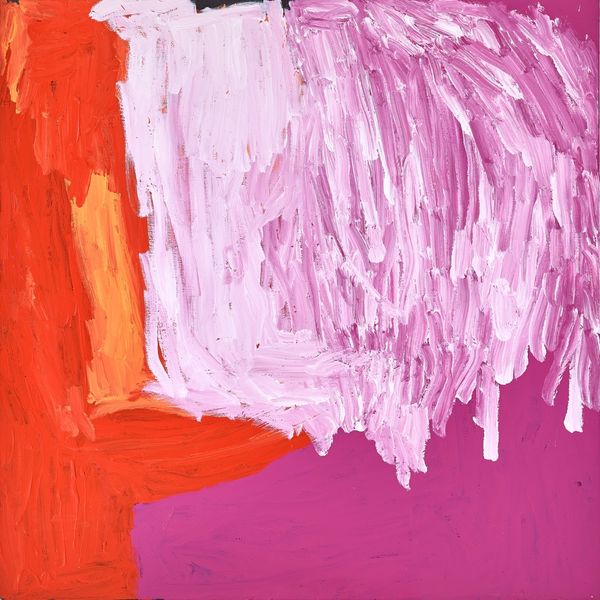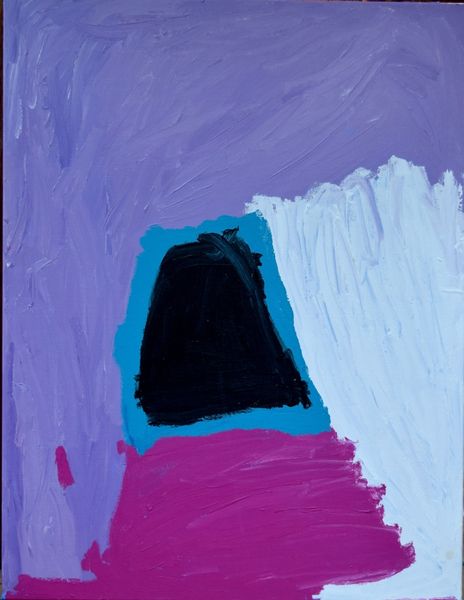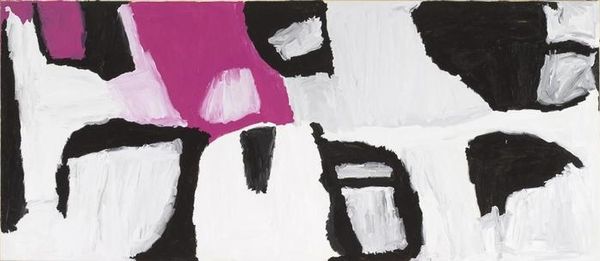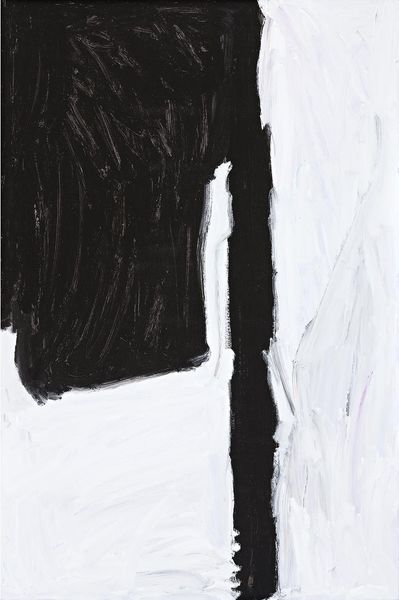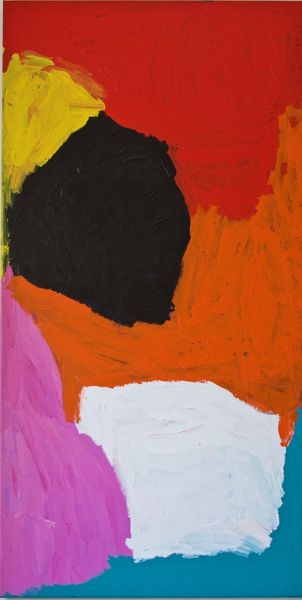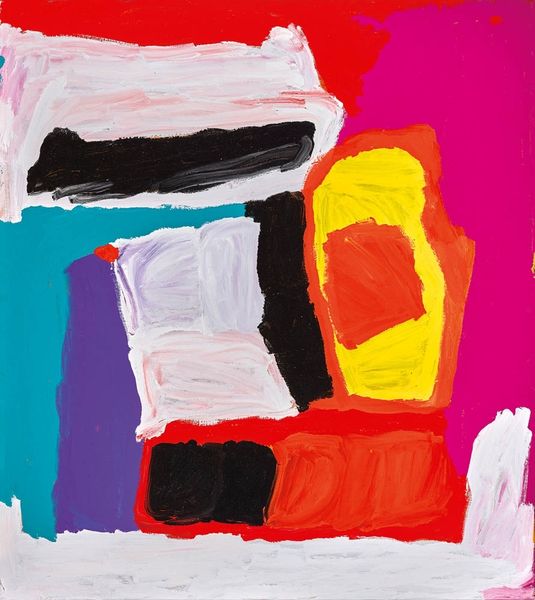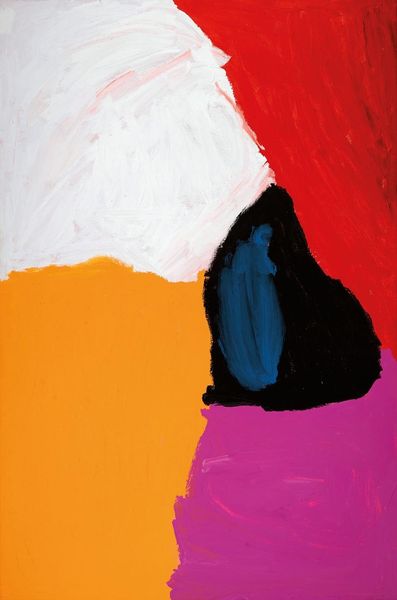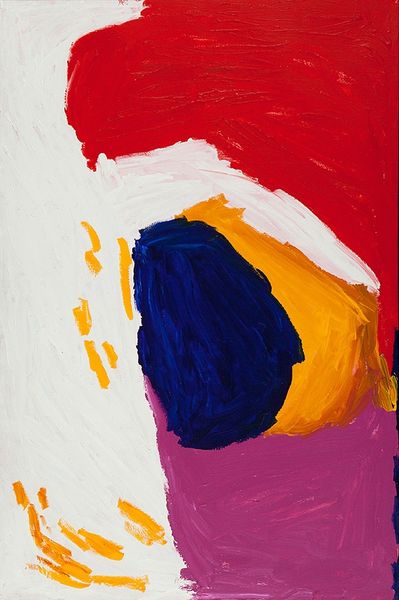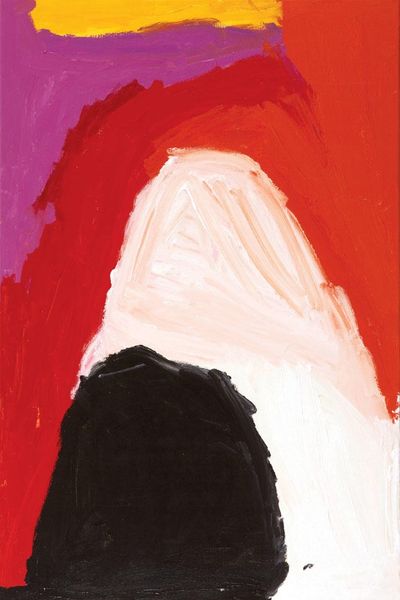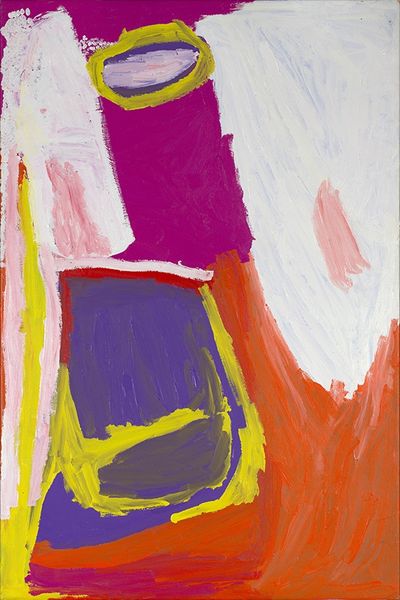
Copyright: Sally Gabori,Fair Use
Editor: Right now we're looking at "Thundi," a 2009 acrylic painting by Sally Gabori. I find the contrast of the stark black, bright pink, and gestural white shapes so striking and almost unsettling. How do you interpret this work? Curator: It's important to view Gabori’s paintings, including "Thundi," through the lens of Indigenous Australian art and its place within the broader art world. Gabori, at around 80 years old, began painting late in life. Her art emerged during a time of increased visibility and recognition for Indigenous artists in mainstream art institutions, shaping both its reception and the market around it. What do you notice about the relationship between abstraction and landscape here? Editor: Well, I see how the shapes, particularly the white ones, could be interpreted as a coastline or land formation against the darker sea or land. It's not a direct representation, but it hints at something real. Curator: Precisely. Gabori primarily painted memories of her ancestral lands on Bentinck Island. Museums often frame Indigenous art either as ethnographic artifacts or contemporary art. How might these contrasting curatorial choices affect our understanding and appreciation of works like "Thundi," which navigate both personal memory and cultural identity? Editor: I suppose if it's seen only as ethnographic, the artistic skill might be overlooked. But if only viewed as contemporary art, we might miss the cultural context that is so important to consider. Curator: Exactly. It compels us to consider how museums mediate the narratives around Indigenous art. Her unique perspective, born from her experiences and cultural heritage, deserves nuanced understanding, considering that it gained widespread recognition so late in her life, in an artworld historically dominated by Western perspectives. Editor: That’s really insightful; it’s shifted how I perceive the role of the artist and the institution here. It's much more complex than I first considered. Curator: Indeed. Gabori's art urges us to ask important questions about art history, cultural representation, and the power structures that shape what we see and value.
Comments
No comments
Be the first to comment and join the conversation on the ultimate creative platform.
